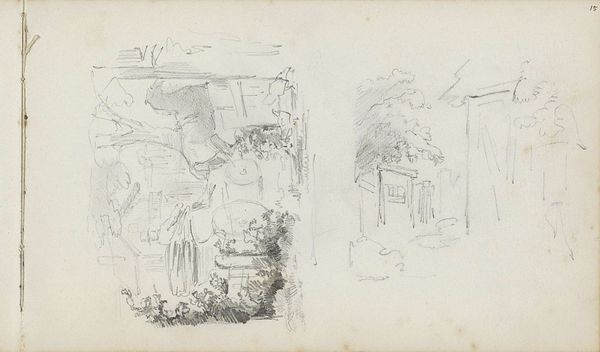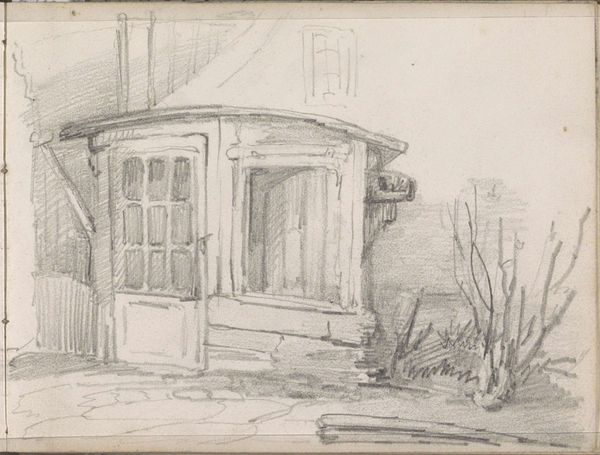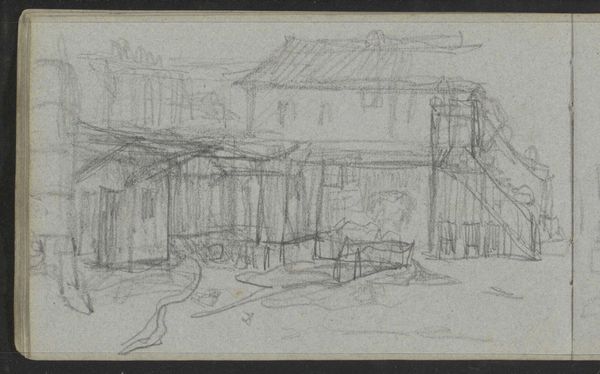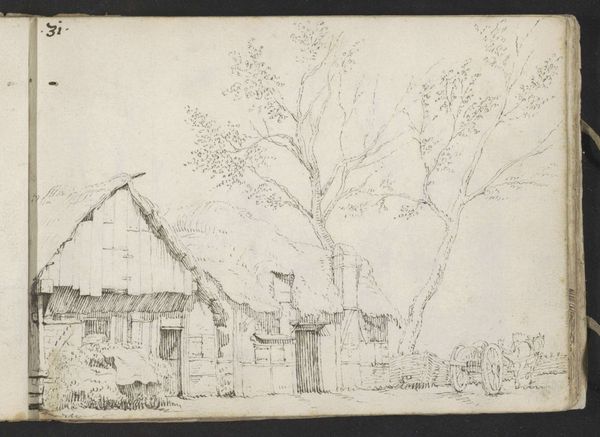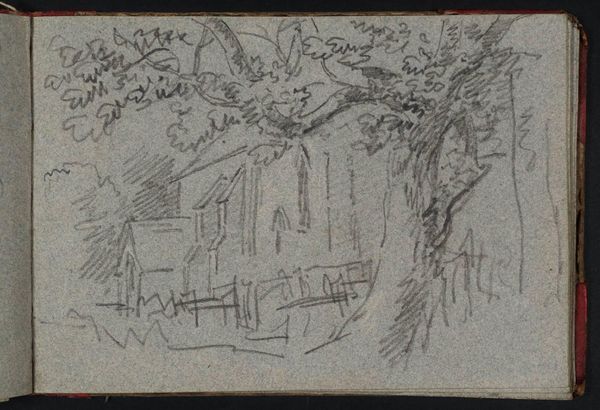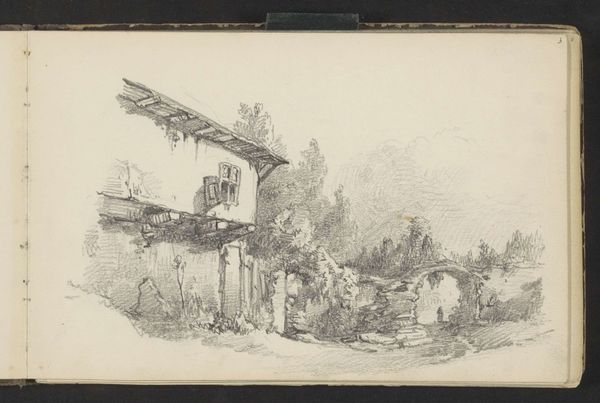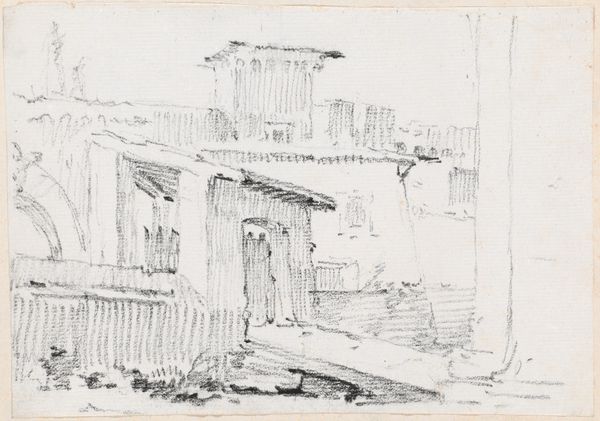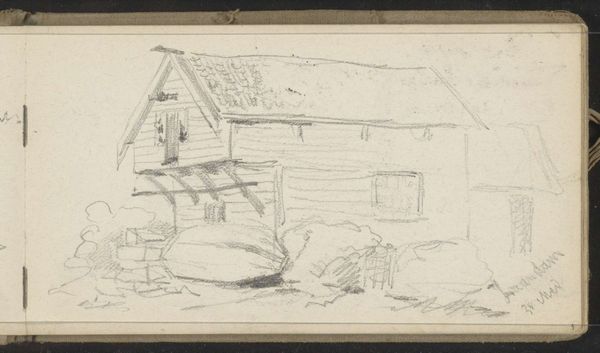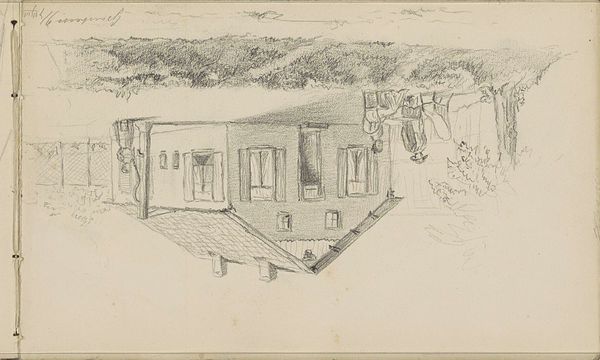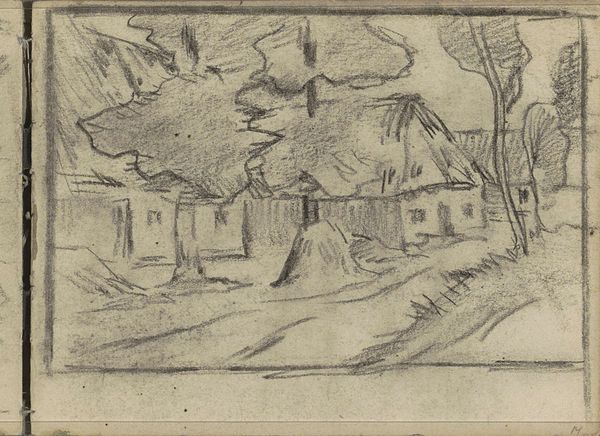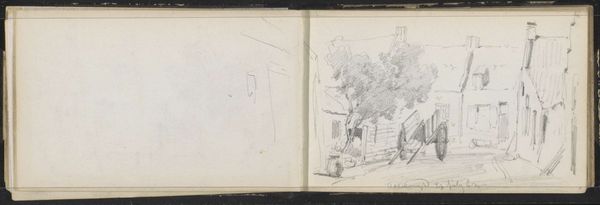
drawing, pencil
#
drawing
#
landscape
#
pencil
#
realism
Dimensions: height 95 mm, width 154 mm
Copyright: Rijks Museum: Open Domain
Curator: The unassuming nature of this pencil drawing belies a deeper story. What do you see here? Editor: Initially, a sketch – fleeting, intimate. It whispers of rural poverty, the humble dwellings workers called home, and a landscape imbued with hardscrabble realities. Curator: This is Willem Cornelis Rip's "Arbeiderswoning bij de Duits-Nederlandse grens," or "Worker's Dwelling Near the German-Dutch Border," created between 1892 and 1897. Consider the social context then; borderlands were often liminal spaces, sites of both opportunity and marginalization for laborers. Editor: It's true. Even through Rip’s rendering, a somber, grey atmosphere seeps through the delicate pencil lines. This wasn't idyllic countryside. Curator: No, it’s about the experience of labor and the representation of laborers. Rip focuses his artistic vision on capturing the specific location, yet it raises crucial questions about class. Notice how the textures – the rough plaster, the thatched roof – communicate materiality, revealing wear. What feeling do you glean? Editor: Beyond mere record, there's something empathetic in the way Rip records those details. Those crossed boards sealing one window, the open upper hatch on the main doorway–each choice emphasizes resilience, suggesting how such symbols permeate the lives of the lower classes throughout history. The work becomes a symbol of resistance in the face of hardship. Curator: Interesting, because Rip himself lived a comfortably bourgeois existence. Does his interpretation idealize working-class labor to some extent? I'm struck that there aren't human figures here to explicitly represent such labor – no residents even. Editor: Maybe this dwelling becomes synecdoche – the house *becomes* the laborer, laden with implication, bearing witness even in the face of its own decay. The empty space feels symbolic too; is it melancholy? Hopelessness? Curator: Perhaps both. Ultimately, this simple pencil drawing is loaded with visual symbols to be parsed, as an observation filtered through both aesthetic conventions and complex social realities. Editor: It reminds us of how seemingly unremarkable scenes conceal layered cultural weight. Seeing how the mundane is charged with significance transforms it, granting insight into society, class, memory, and, crucially, artistic intention itself.
Comments
No comments
Be the first to comment and join the conversation on the ultimate creative platform.

